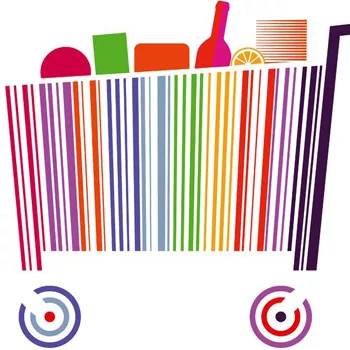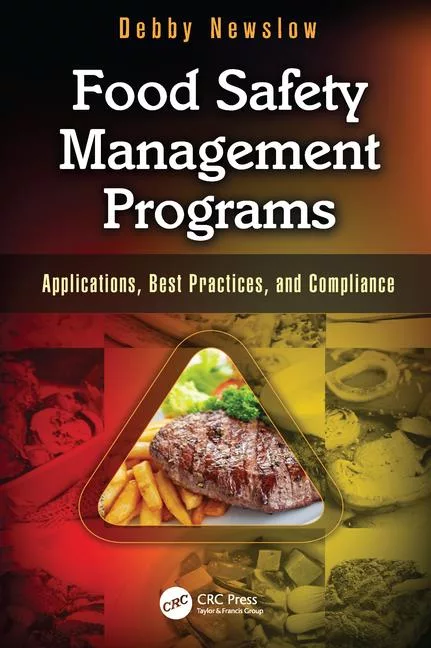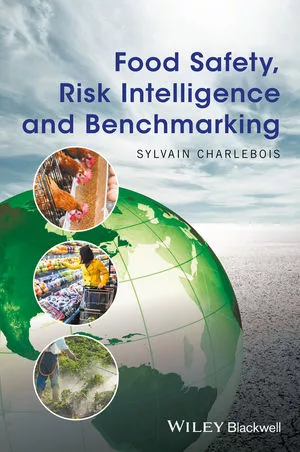Best Traceability Practices

Whether large- or small-scale, food product recalls tend to leave their mark on the industry and often alter practices for the better. Many wondered if the ground beef industry would ever recover from two massive back-to-back recalls in 2007 and 2008 during which more than 30 million and 140 million pounds of ground beef were recalled respectively because of potential Escherichia coli and mad cow disease contamination. In 2011, farmers reeled from one of the worst Listeria outbreaks associated with cantaloupe in more than a decade.
Food recalls are a reality of producing and processing food on a massive scale for a consumer populace such as the United States, despite strict government regulations and manufacturer adherence to safety and quality protocols. In order to react quickly and responsibly to a voluntary or involuntary recall, all companies must be adequately prepared.
Types of Product Recalls
As all food safety and quality assurance professionals know, a product recall is the process of retrieving defective goods from consumers and providing those consumers with compensation. They occur one of two ways—by voluntary or involuntary means. In the case of voluntary recalls, the company in question receives notice of a defect from a consumer, internal quality assurance team member and/or a regulatory agency, such as the U.S. Food and Drug Administration, and recalls its products as part of its commitment to quality. Involuntary recalls occur as a result of a requirement issued by a regulatory agency because of an oversight or misstep in one or more aspects of the manufacturing process. Whatever the reason, product recalls are extremely costly and can be detrimental to a brand’s public image if not handled swiftly and strategically.
Why Product Recalls Occur
Recalls happen for many reasons—mislabeled packaging, an undeclared ingredient, discovery of a food allergen, contaminated ingredients, to name a few. Additionally, because contamination can occur at several different points in the supply chain—the primary manufacturing facility, package development, and even within third party manufacturing that provides a certain ingredient(s) for the finished product—it can be challenging to identify the defect and its cause. In today’s global economy, companies face the added challenge of identifying materials or sources of contamination that may occur abroad.
Because the identification of the defect is the most important step in any product recall, the speed with which that is done is crucial especially in cases where the public’s health and wellbeing is at stake.
Every ingredient involved in manufacturing from start to finish has its own unique code to ensure that a defect can be quickly recognized and rectified if the need arises. Coding is key in tracing defects in product recalls, and because of this, standards of coding should be set forth for all suppliers. If the defect poses a risk of any kind to the consumer, all product must be removed from distribution. In some cases, huge quantities of inventory from multiple locations has been pulled from shelves.
Bringing in the Experts
Equally as important as identifying the defect and cause of the defect in any product recall, is communicating with the consumer in an open and honest forum. In many cases, the food manufacturer will, and should, partner with a contact center that has vast experience in dealing with recalls and the necessary staff to execute communication plans quickly—typically within 24 to 48 hours. These experienced consumer engagement agents will ensure consumers receive timely information as soon as possible and advise them of the necessary steps with regard to the disposal or shipment of product back to the manufacturer. This step in the recall process can often be a stumbling block for many companies as it is during this time that the public and media can pounce on any delay, misstep or miscommunication to the consumer.
The volume of consumer contacts during a recall event is hard to predict in advance, but can scale up to 1,000,000 calls throughout the life of a large event. Typically, little time is available to prepare for the influx of consumer contacts, and is sometimes even measured in hours. The sheer volume of potential inquiries is why many companies look to customer service experts for help.
The recall process: planning, implementation and execution
1. Planning
No matter which expert a manufacturer enlists in the product recall process, it is imperative to bring them on board as soon as possible and allow them to ultimately become an extension of the brand team. The first step the recall experts at a contact center will take is to fully understand the scope of the recall – how many households are potentially impacted, who is the affected demographic, what is the consumer risk and severity of the recall?
The recall experts will most often work in tangent with the manufacturer’s communications team to have a clear understanding of the media announcement plan in order to predict response rates and preferred contact method from the consumers.
2. Implementation
Another reason why contact center recall experts should be involved in the process as early as possible is that they will be able to provide a unique perspective and offer insight and best practices based on anticipated responses from consumers and extensive experience in handling similar events. Using this experience and industry insight, the expert will be able to implement the most foolproof recall program to minimize the negative fallout for the manufacturer and ensure the safety of its consumers.
Based on the initial information regarding the circumstances of the recall, the experts will determine the appropriate number of highly trained contact center professionals to take care of each and every consumer inquiry as well as number and type of specialists that will be needed, such as bilingual teams or registered nurses, because no two recalls are identical.
While experts are making these crucial determinations, all the members of the recall action team should be working to quickly generate a communication plan that may include toll-free phone numbers for consumer inquiries, websites to direct traffic for recall-related information, training materials and tracking methods, and a clear and strategic escalation process. These activities take place day or night, and are often completed within a 4- to 24-hour period.
3. Execution
In most cases, the consumer learns of a recall via a well-crafted strategic media announcement or retail store communication. Simultaneously, the customer service team will spring into action—answering phone calls, emails and interacting with concerned consumers via live chats. In the event of a recall, phone and email support volume can range anywhere from 100 to 1,000,000 calls and a 1,000 percent increase in incoming emails. These numbers underscore the need for a recall expert partner with extensive experience with food recalls, especially those on a larger scale and with broad impact.
Depending on the defect and severity of the recall, brands may also enlist cloud-based interactive voice response technologies (IVRs) to manage large volumes across multiple locations with minimal costs, bilingual staff to support calls in several languages and registered nurses to address illness-related concerns and to provide nutritional information and guidance. A typical recall can last anywhere from 30 days to 6 months, and in some cases, even longer.
An Inside Look: A Product Recall in Action
In November 2012, one of the leading consumer packaged goods companies in the U.S. issued a voluntary recall of one of its newly acquired specialty food brands after routine testing detected potential Salmonella contamination. The company notified its call center partner at 2 p.m., advising them of the need for 24/7 support outside of its regular customer service hours to accommodate the recall. Within 4 hours, the call center expert executed a training plan and put the appropriate staff in place, including support for English, Spanish and French calls. The recall partner also began the process of building IVRs for the expected influx of consumer calls.
Within hours of the official announcement, the call center was fully staffed and prepared to take phone calls on behalf of the brand, which it continued in synergy with contact volumes received. The call center agents provided consumers with answers and prompt resolution to their concerns, and as a result, the household food brand emerged with continued brand loyalty and uninterrupted sales.
Aftermath of a Recall: What to Expect After the Unexpected
Recalls can have huge or very little effect on a brand—depending on the public’s perception of how the recall was handled. Some brands emerge from a product recall with little to no damage to their public image, others are temporarily damaged but have a quick recovery, while others encounter long-lasting effects from which they never truly recover. But one constant in regards to product recalls, is the opportunity for learning—how manufacturers can continue to improve the product recall process to protect their brands and most importantly, their customers. After a recall, it is not uncommon to see enhanced packaging, warning labels stating allergens, tamper evident seals, and flash pasteurization, among other improvements.
The Recall Preparedness Checklist
The below checklist briefly outlines how manufacturers are advised to proceed when encountered with a product recall:
• Determine cause of the defect
• Determine severity of the defect
• Implement measures to correct the defect
• Enlist and rely on an expert
• Create a detailed communication and response plan
• Carefully execute the plan
• Educate the public and ensure safety of the public
• Maintain constant readiness and plan for the unexpected
Product Recalls Today
The frequency of recalls may appear to be on the rise, but it is unclear whether that is simply a perception or a result of more consumer awareness and company vigilance or a combination of all factors. Thanks to the media, product recalls are more visible than ever before, with investigative reporting getting to the most granular detail of each and every high-profile recall. However, it may be the role of social media that has forever altered the visibility of product recalls. Today’s consumers can voice their questions and concerns in a number of public forums like never before. By publicly expressing their concerns for all to see, the potential for complaints to reach a broader audience because of the viral nature of the Internet is unlike anything companies and manufacturers have ever faced.
Consumers have also become more assertive—wanting answers in real-time due to the real-time nature of social media.
While social media creates a challenge for brands amidst product recalls, this new level of visibility also presents an opportunity, with more vehicles to communicate, interact and educate consumers than ever before. This puts brands in a precarious position, and demands that a state of readiness be intact in the event that a product recall arises.
The Bottom Line
There are no guarantees when companies are confronted with a product recall, but by remaining in a constant state of readiness and partnering with experts who can provide strategic guidance, companies can ensure a smooth product recall process from start to finish, and most importantly, an untarnished brand image.
Joe Dickerson is regional vice president of operations at Telerx. For more information, visit Telerx.com.
Looking for quick answers on food safety topics?
Try Ask FSM, our new smart AI search tool.
Ask FSM →








.webp?t=1721343192)